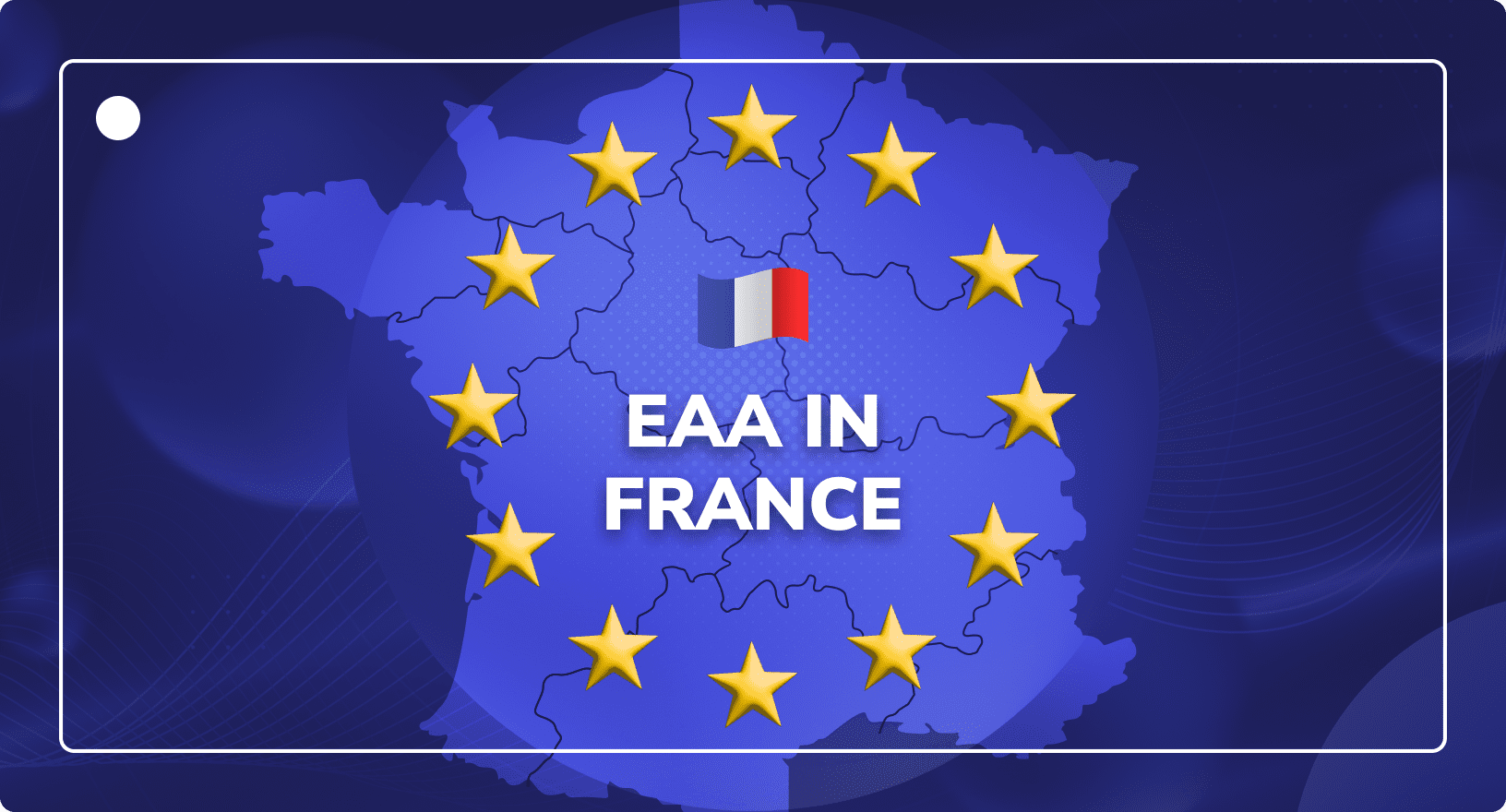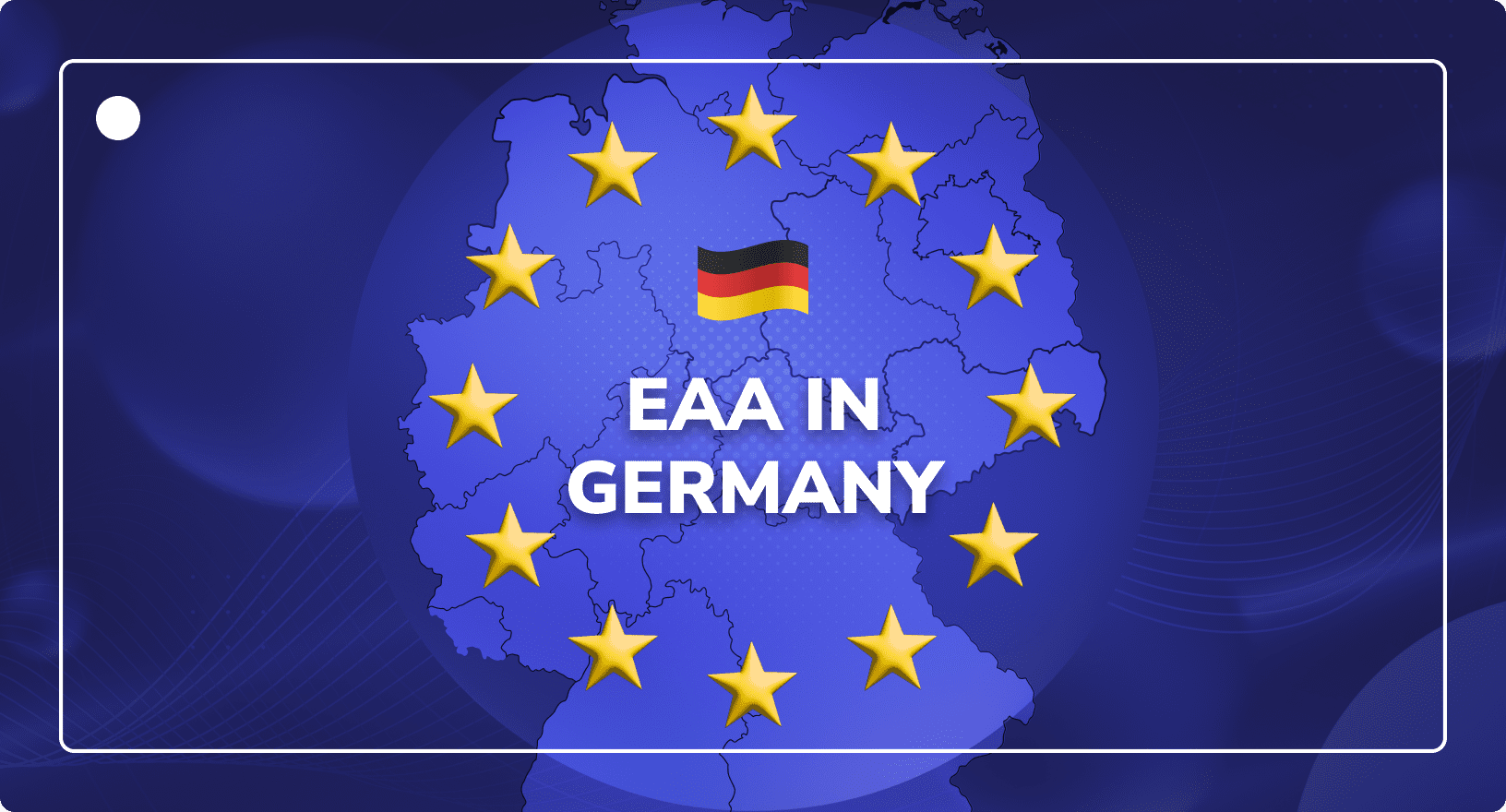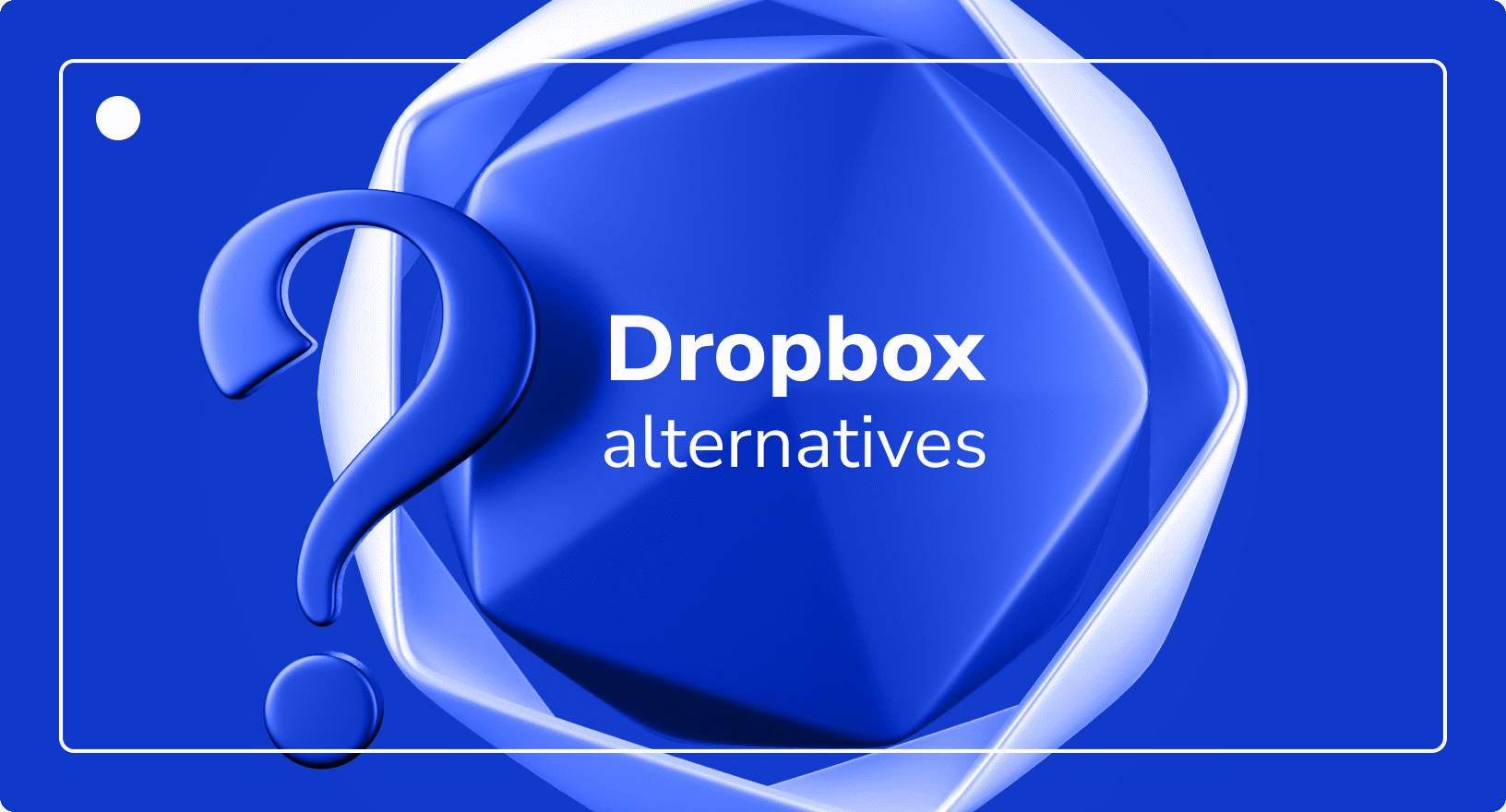How E-Commerce Companies Can Comply With the European Accessibility Act in Italy
Digital Accessibility
Updated on April 28, 2025
The European Accessibility Act in Italy is a game-changer for digital content. The new EU directive is now part of national law via Decreto Legislativo 27 maggio 2022, n. 82. This update also expands the Stanca Act to cover websites, mobile services, and apps, meaning digital accessibility is no longer optional.
From 28 June 2025, all newly introduced digital products, including audiovisual media services like product videos and 3D models, must meet specific accessibility standards. For Italian businesses, especially those in e-commerce or software, this is the moment to get ahead by improving the user experience for millions of people.

What is the European Accessibility Act?
To standardise accessibility standards throughout EU member states, the European Accessibility Act (EAA) of 2019 was developed to guarantee that individuals with disabilities have equal access to various goods and services. This EU rule addresses the need for an inclusive society by reducing obstacles to accessing digital products and services, services, and content.
Brief History and Purpose
The EAA was created to address regulatory disparities among EU member states and advance a unified set of accessibility guidelines. By removing obstacles to accessible products and services, the EAA’s main goal is to improve internal market performance and provide disabled people with more accessible alternatives.
Industries Affected

The EAA impacts several industries, including:
- E-commerce: Online retailers must ensure their websites and mobile applications are accessible.
- Banking: Financial institutions must provide accessible services, including ATMs and online banking platforms.
- Public Transport: Providers must offer accessible information and ticketing services.
- Digital Services: Companies offering digital products or services must comply with accessibility standards.
- Hardware Manufacturers: Producers of computers, smartphones, and other digital devices must ensure their products are accessible.
Key EU-Wide Compliance Deadlines and Enforcement Mechanisms
The European Accessibility Act was adopted on June 27, 2019. EU member states had until June 28, 2022, to implement it into national law. Businesses must comply with these accessibility standards by June 28, 2025.
Among the enforcement methods are fines and regulation by national agencies with the necessary authority.
How Will the European Accessibility Act Impact E-Commerce Services in Italy?

For businesses operating e-commerce services regulated websites in Italy, the EAA introduces specific obligations to ensure accessibility throughout the user journey.
Compliance Requirements for Online Stores, Apps, and Payment Platforms
E-commerce entities must ensure that their digital platform operating systems are perceivable, operable, accessible, understandable, and robust for all users, including those with disabilities.
Example: An Accessible E-Commerce Journey in Italy
Consider an online shopper in Italy with visual impairments. An accessible e-commerce platform would allow this user to:
- Navigate the website using screen reader software.
- Easily read product descriptions with appropriate text sizing and contrast.
- Complete the checkout process without encountering inaccessible form fields.
- Access customer support through multiple channels, such as chat or voice options.
European Accessibility Act Legislation in Italy

Italy has integrated relevant obligations under the EAA into its national legislation, reinforcing its commitment to accessibility.
Implementation Through Decreto Legislativo 27 maggio 2022, n. 82
Italy implemented the EAA through Decreto Legislativo 27 maggio 2022, n. 82, specifying mandatory accessibility standards for digital products and services across sectors.
Explanation of the Stanca Act (Legge Stanca)
Originally enacted in 2004, the Stanca Act targeted accessibility in the public sector. With Legislative Decree 82/2022, its scope now extends to private businesses, particularly those offering services to the public, such as e-commerce platforms.
Key Regulatory Bodies Overseeing Compliance in Italy
In Italy, compliance with accessibility laws is overseen by:
- Ministry of Enterprise and Industry: Supervises product compliance with accessibility laws.
- Agency for Digital Italy (AgID): Oversees compliance for digital service contracts and enforces WCAG adherence.
Core Requirements for EAA Compliance in Italy
Italian law defines what the requirements for compliance are as follows:
Digital Accessibility (Websites & Apps)
Websites and mobile applications must align with WCAG 2.1 AA standards, ensuring platforms are:
- Perceivable: Content can be detected by all senses.
- Operable: Navigation and functionality are accessible via multiple input methods.
- Understandable: Information is clear and easy to comprehend.
- Robust: Content remains compatible with a wide range of assistive technologies.
Specific Considerations:
- Images: Include meaningful alternative text (alt-text).
- Videos: Provide captions, subtitles, and audio descriptions.
- 3D Models: Ensure keyboard navigability and compatibility with screen readers.
- PDFs: Create properly tagged, accessible PDFs — avoid flat scans.
E-Commerce & Digital Payments
- Digital payment systems must be fully accessible.
- Interactive elements, forms, and error messages should be understandable and usable for individuals with cognitive impairments.
Physical Stores & Customer Service
While the EAA focuses heavily on digital, physical stores should also provide accessible communication services (e.g., SMS, sign language interpretation) and ensure staff are trained to assist customers with disabilities.
Finance and Transportation Sectors
The EAA’s influence extends to:
- Financial Services: Online banking platforms and ATMs must be accessible.
- Transportation: Digital ticketing systems and travel information must cater to all users.
Who Must Comply with Italian Accessibility Laws?
The table below outlines several entity types that must comply with the European Accessibility Act in Italy.
Industries Impacted
Here are the main industries impacted by the new legistlation:
- E-commerce platforms
- Retailers (physical and digital)
- Financial institutions
- Transportation companies
- Public service providers
- And more…
EAA Comparison Guide: Italy vs Other European Countries
Accessibility laws and enforcement mechanisms can vary across EU member states. Here’s a comparison of how different countries have implemented the EAA:
Risks of Non-Compliance with Italian Accessibility Requirements
Failure to comply with accessibility laws in Italy can lead to several significant risks:
- Legal Risks: Fines between €5,000–€150,000 per infraction, plus corrective orders.
- Economic Risks: Lawsuit costs, forced service disruption, and loss of operational efficiency.
- Reputational Risks: Loss of brand trust, negative media exposure, and reduced market share.
How to Achieve EAA Compliance in Italy: Step-by-Step
Achieving compliance with the EAA involves a systematic approach. Here’s a practical checklist for businesses:
- Conduct an Accessibility Audit: Identify gaps through automated and manual testing against WCAG 2.1 AA.
- Implement Corrective Measure: Fix web, app, and checkout issues prioritising assistive technology compatibility.
- Train Your Team: Build accessibility knowledge into your development, content, design, and support workflows.
- Engage Accessibility Expert: Use external consultants for impartial audits and remediation advice.
- Monitor Continuously: Implement regular audits and stay up-to-date with evolving standards.
The Future of Accessibility in Italy: Beyond 2025
As the 28 June 2025 deadline looms, companies need to get ready for the future of accessibility in Italy.
Will Penalties for Non-Compliance be Larger?
Though non-compliance penalties are currently between €5,000 and €40,000 per non-conformity, stricter enforcement with higher fines is possible. Preemptiveness on accessibility can expect fewer chances of higher penalties.
Will Accessibility Legislation Cover More Sectors?
The accessibility regulation jurisdiction may also cover other industries. There is a dire necessity for firms to adhere to the recent laws so that it may effectively anticipate and react to new standards.
How AI and Automation Might Revolutionise Digital Accessibility
Artificial intelligence and automation developments provide new technologies and IT solutions for enhancing accessibility. AI-powered tools, mobile operating systems and applications can support real-time content adaptation, automated testing, and tailored user experiences, making it easier to comply with accessibility statements.
The Role of Inclusive Design in Business Growth
Adopting inclusive design not only guarantees compliance, but also expands your market. Companies can innovate and establish user loyalty by designing products and services to meet various needs.
How DemoUp Cliplister Supports E-Commerce EAA Compliance
DemoUp Cliplister offers accessibility solutions to streamline your compliance journey:
- Compliant Display: All your content is displayed through EAA-compliant players, providing an accessible experience for all users.
- Centralised Management: Our platform provides a unified location for managing all your e-commerce accessibility requirements for media assets.
- Comprehensive Scanning: We scan images, videos, 3D models, and PDFs to ensure they meet accessibility standards and identify and address potential issues.
- Metadata Generation: Our tools generate missing metadata for videos and 3D models, ensuring your media assets comply with accessibility guidelines.
- Retailer Approval: We assist in getting your content approved for display on retailer websites, ensuring it meets all necessary accessibility criteria.
Book a demo today to simplify compliance and elevate your digital experience.

Stop Risking Fines. Start Getting Compliant.
Book a free demo and fix your media assets before Italy’s 2025 EAA crackdown hits.
Wrapping Up
Compliance with the European Accessibility Act isn’t just a regulatory burden. It’s a strategic opportunity to lead with inclusivity, capture broader audiences, and future-proof your business. Act early and implement comprehensive accessibility measures so your company can thrive in a more equitable, digitally accessible future.
Frequently Asked Questions (FAQ)
As the European Accessibility Act (EAA) enforcement date approaches, many businesses are seeking clarity on what it means for their digital platforms. Below, we answer the most common questions about accessibility laws in Italy and how to ensure compliance.
For even more insights on accessibility, e-commerce, and digital best practices, visit our blog or explore the homepage to learn more about our full range of solutions.
The Stanca Act (Legge 4/2004) initially targeted public sector websites and platforms but has now been extended to cover private entities. This means that all e-commerce platforms operating in Italy must ensure their websites, apps, and digital services meet WCAG 2.1 AA accessibility standards. Compliance is no longer optional — it is a legal requirement.
Fines range from €5,000 to €150,000 per violation, plus potential legal action or mandatory remediation orders.
The EAA compliance deadline in Italy is 28 June 2025.
E-commerce, finance, transportation, and any public-facing service providers must meet accessibility requirements.
We ensure your media assets, including videos, images, 3D models, and PDFs, are compliant, helping you avoid penalties and tap into a broader market.
Better Content. More Sales.

Fill out the form to discover our end-to-end eCommerce content solutions for brands & shops



